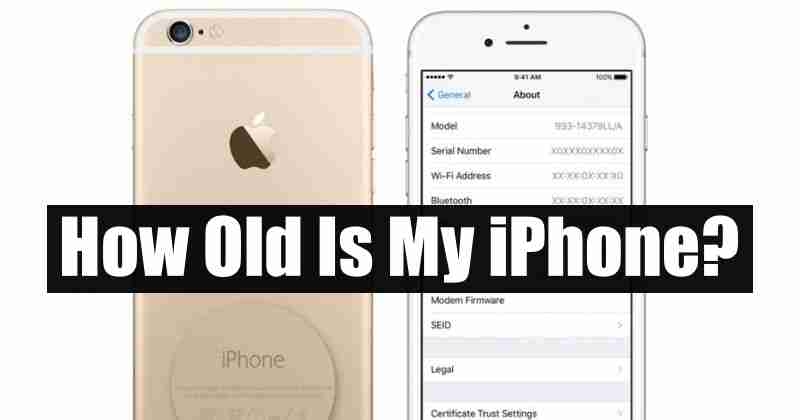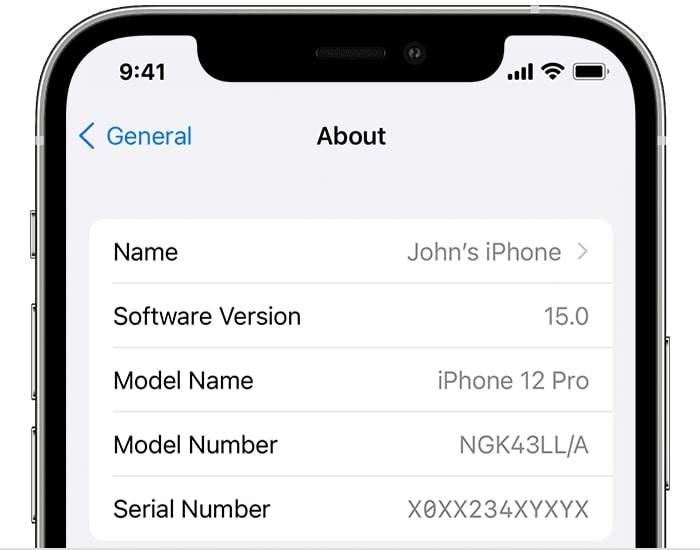How to check your iPhone’s age?
To find your iPhone’s age, you’ll need to know its model number and purchase date. With that information, you can use Apple’s checker tool to see how old your iPhone is.
Fix: “This Password Appeared In A Data Leak” on iPad/iPhoneHow to Invert Colors on iPhone?How To Turn Off Private Browsing On iPhone?
Your iPhone’s model number can usually be found on the back of your iPhone, near the bottom. You can also check in the Settings app under General > About if it’s not there. The purchase date is when you bought your iPhone outright or first signed a contract to get it on a monthly plan. Once you have that information, head to Apple’s checker tool and enter in your iPhone’s model number and purchase date. Apple will then tell you how old your device is and when it was manufactured.
Why it’s important to know your iPhone’s age?
Your iPhone’s age is important for several reasons: There are a few different ways to determine your iPhone’s age. One is to check the serial number of your device. In the Settings app, go to General > About. The other way to determine your iPhone’s age is to check the date your device was manufactured. You can find this information on your iPhone’s box or on Apple’s website. Once you know your iPhone’s age, you can use this information to make informed decisions about how to use and care for your device.
How to find out the manufacturing date of your iPhone?
If you’re curious about how old your iPhone is, there are a few ways to find out. One way is to check the serial number, which will reveal the iPhone’s manufacture date. To find your iPhone’s serial number, go to Settings -> General -> About. Scroll down to the “Serial Number” entry. The first part of the serial number will tell you the week your iPhone was manufactured, and the second part will tell the year. You can check the internal components if you want a more accurate way to determine your iPhone’s age.
How to check your iPhone’s warranty status?
If you’re unsure whether your iPhone is covered by warranty, Apple has a handy tool to help you check. Just enter your iPhone’s serial number into the Apple Warranty Status website, and it will tell you whether your device is under warranty and when that coverage expires. You can find your iPhone’s serial number in the Settings app: tap General > About > and find the “Serial Number” line. If a warranty covers your iPhone, Apple will repair or replace it for free. You’ll have to pay for repairs or replacement out of pocket if it’s not covered.
What to do if your iPhone is no longer under warranty?
You can do a few things if your iPhone is no longer under warranty and you need to get it repaired. One option is to take it to an Apple Store or an authorized Apple service provider. During this time, they will be able to provide you with an estimate for the repair cost. If the service cost is too high, you can always choose to buy a new iPhone. Another option is to look for a third-party repair company specializing in iPhones. These companies usually have lower prices than Apple but may not use official Apple parts. This should not be a problem if they use high-quality parts and do a good job with the repair. Make sure you do your research and choose a reputable company. You could also try repairing the iPhone if you’re handy with electronics. This is usually not recommended, as it voids the warranty and can be tricky to do correctly. Nevertheless, it’s worth a shot if you’re feeling adventurous and looking to save some money. There are lots of helpful guides and videos online that can walk you through the process step-by-step.
How to extend your iPhone’s warranty?
An iPhone is a significant investment, and you want to do everything you can to protect your purchase. One way to do this is by extending the warranty, which will give you additional peace of mind and protection in case something goes wrong. Here are a few things to keep in mind when considering an extended warranty for your iPhone. First, most Apple products come with a one-year limited warranty that covers hardware defects and problems with operating the device. This warranty does not cover accidental damage, so if you drop your iPhone and crack the screen, you’ll have to pay for the repairs yourself. AppleCare+ is an extended warranty that does cover accidental damage, as well as provides extended technical support. It costs $149 for AppleCare+ on an iPhone 8 or newer (or $199 for the iPhone X), and it must be purchased within 60 days of buying your iPhone. If you have an older iPhone, some extended warranty options are still available. Best Buy offers its own Geek Squad Protection Plan starting at $9.99 per month, covering accidental damage (physical and liquid) and normal wear and tear. As with AppleCare+, this plan must be purchased within 60 days of buying your iPhone. Also, third-party insurance plans may provide more comprehensive coverage than AppleCare+ or Best Buy’s Geek Squad Protection Plan. These typically cost around $10 per month, but carefully read the fine print before signing up for any plan to ensure you understand what is and is not covered. In general, it’s a good idea to get some kind of extended warranty or insurance plan for your iPhone if you can afford it. This way, you’ll be covered if something goes wrong and you need repairs or replacement parts.
How to keep your iPhone in good condition?
Assuming you take good care of your iPhone, it should last a few years. But you can do a few things to extend its lifespan and keep it running smoothly for as long as possible. Here are a few tips:
Keep it clean: Regularly clean your iPhone with a soft, lint-free cloth. Wipe down the screen and the back of the phone to remove any dirt, dust, or fingerprints.
Be careful with charging: Avoid letting your battery drain completely before recharging. It’s also important not to overcharge your phone – unplug it once it reaches 100%.
Be gentle: Avoid dropping or banging your iPhone against hard surfaces. This can damage the internal components and shorten their lifespan.
Use a case: A case can help protect your iPhone from scratches, dents, and other types of damage.
Update regularly: Keep your iOS software up to date by installing the latest releases from Apple. This will help fix any existing bugs and also prevent new ones from developing.
How do troubleshoot common iPhone problems?
If your iPhone is giving you trouble, there are several ways to troubleshoot the problem. This guide will take you through some of the most common iPhone problems and how to fix them. First, ensure that your iPhone is running the latest version of iOS. To do this, go to Settings > General > Software Update. If there is an update available, download and install it. If your iPhone is still having problems, try restarting it. To do this, press and hold the power button until the “slide to power off” slider appears. Slide it to the right, and wait for your iPhone to turn off. Once it’s off, press and hold the power button again until you see the Apple logo appear. If your iPhone still has issues after restarting it, try resetting it. To do this, go to Settings > General > Reset > Reset All Settings. This will reset all your settings to their defaults but will not delete any of your data or apps. If you’re still having problems with your iPhone, you can reach out to Apple’s support team for help.
Conclusion
We hope this article has helped you understand how old your iPhone is and why it is important to know its age. You can follow any of the above-mentioned solutions to check the age of your iPhone and consider the above tips to maintain it in proper condition.

